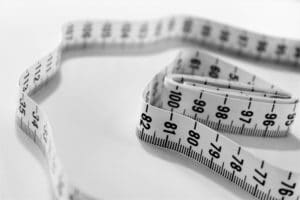Are you curious about how to prevent muscle imbalance? People go to the gym for different reasons. Some go to improve their strength. Others go because their doctor says so, while others go for aesthetic reasons. Regardless of your reason, building muscles comes automatically.
Muscles have many advantages, such as improved self-confidence and emotional state, and can even help manage blood sugar. That said, building muscles is not always an easy task. Sometimes you could build muscles but do it wrong, leading to muscle imbalances. In this article, we discuss muscle imbalances in detail.

What causes muscle imbalances? Several things cause muscle imbalances, which include:
Poor workout program
An exercise routine should include adequate volume for all muscle groups to grow evenly. Many training routines, especially for men, give special attention to the ‘show muscles,’ such as the arms and shoulders. Overtraining these display muscles leads to neglect of other muscular areas, including the back and legs. Also, this causes muscular imbalances and an unattractive physique, defeating the sole purpose of going to the gym.
Mindless lifting
Mindless lifting is standard when people talk throughout sets or let their thoughts wander instead of focusing on the reps. When you are focused, you can control the pace of each rep, which means weaker muscles will not recruit help from other muscle groups. That way, the weaker muscles will have the momentum needed to move the weight, which will help them grow appropriately.
Injuries
Injuries prevent you from training, so you must take a break. During the healing process, the injured area’s muscles may deteriorate.
For example, a medically repaired torn left bicep will become weaker than the right. Even after complete recovery, it may not be able to sustain large loads in training due to structural issues. As a result, muscle imbalance occurs.

How can muscle imbalances be identified?
Measuring Muscle Size
Identifying muscle imbalance is not always easy. After all, we all look at things from different perspectives. For example, what could seem like an imbalance in your eyes could be perfectly symmetrical in your friend’s eyes. Still, you could identify the imbalance by measuring the dimensions of twin muscles of quads or biceps. If there is a muscle imbalance between the muscles, one will show higher measurements than the other.
By Taking Pictures
You could also identify the imbalance by taking pictures from different angles and comparing them. While looking at the pictures, look at symptoms such as rounded shoulders, which is the most common way that suggests muscle imbalances. Another sign is swayed back posture. Take shirtless pictures and look at your posture. If you notice an automatic sway posture, you have a muscle imbalance.
Frequent Injuries
Muscle imbalance has adverse effects such as pain, damaged joints, restricted mobility, etc. The good news is that muscle imbalances are correctable.
If you want to know how to prevent muscle imbalance, check out this article by Fitness19. It provides in-depth knowledge of the causes, signs, and how to avoid muscle imbalances.
The Last Word a Comprehensive Review of Muscle Imbalance and Its Causes
Building muscles come with many benefits. However, building muscles is not always easy. It requires determination, hard work, consistency, and following the right workout program. Discipline while working out is as critical as your motivation for muscle building.
Use a good workout program and technology to ensure each muscle gets the proper work. Also, track your results because some muscles may be easier to grow than others. In addition, genetics and lifestyle choices influence how muscles develop.
For example, a person who stands on their feet all day may find it easier to develop muscular legs than someone who sits at a desk.
Finally, keep it simple. Volume performed in a workout along with a diet causes muscle growth. You determine volume by multiplying weight, reps, and sets together.
What do you think? Please share your response in the comment section below so that others can benefit from your experience.




